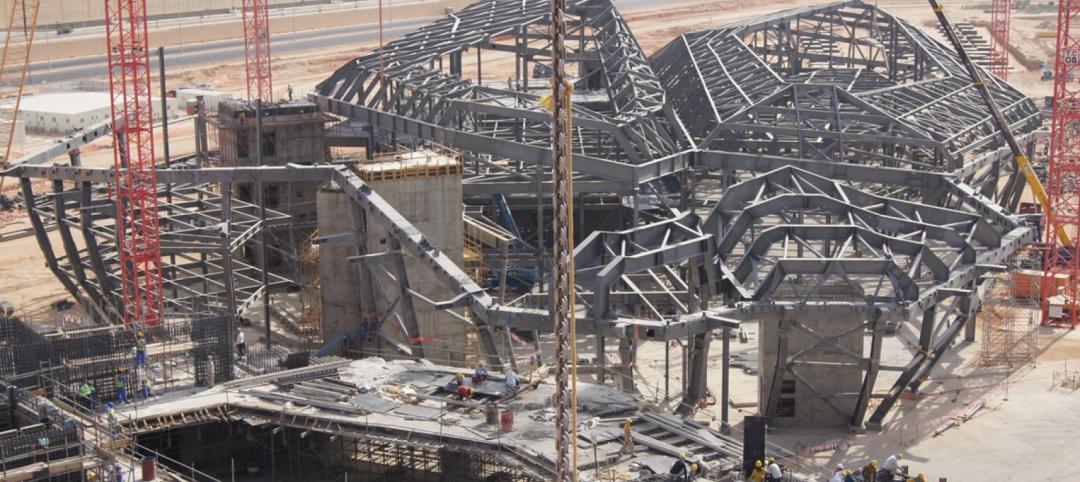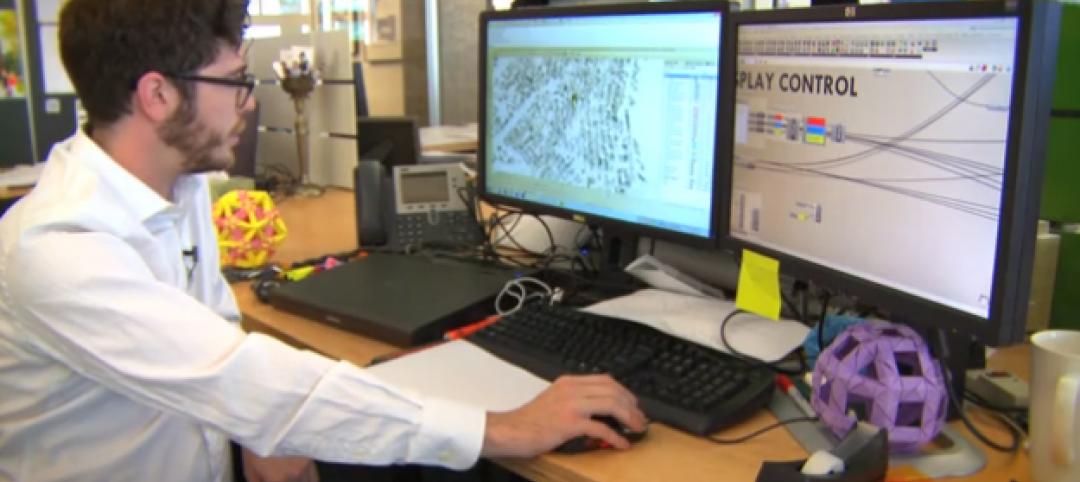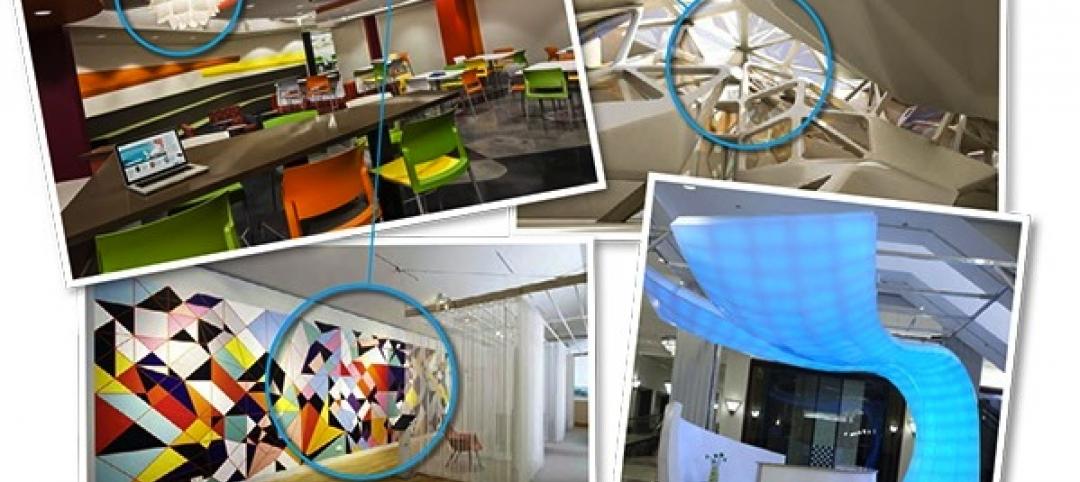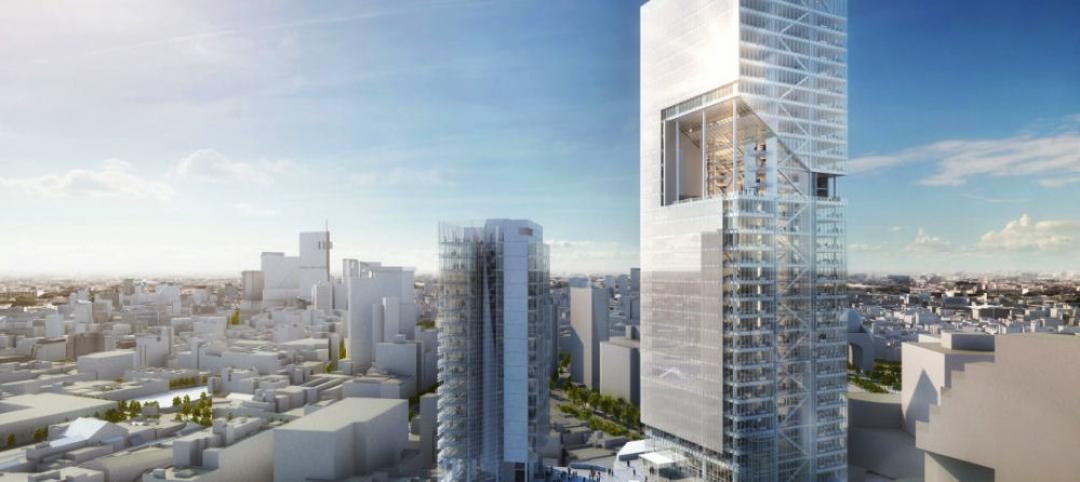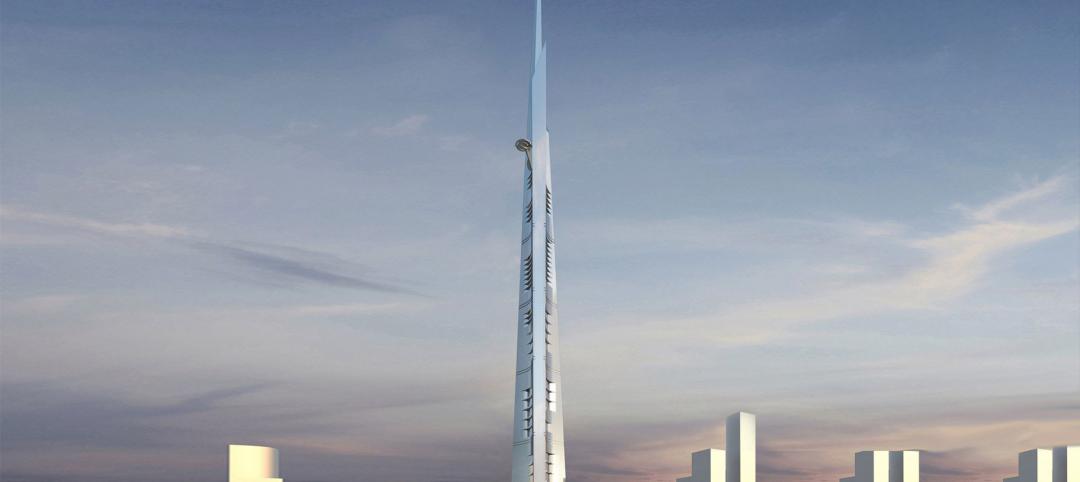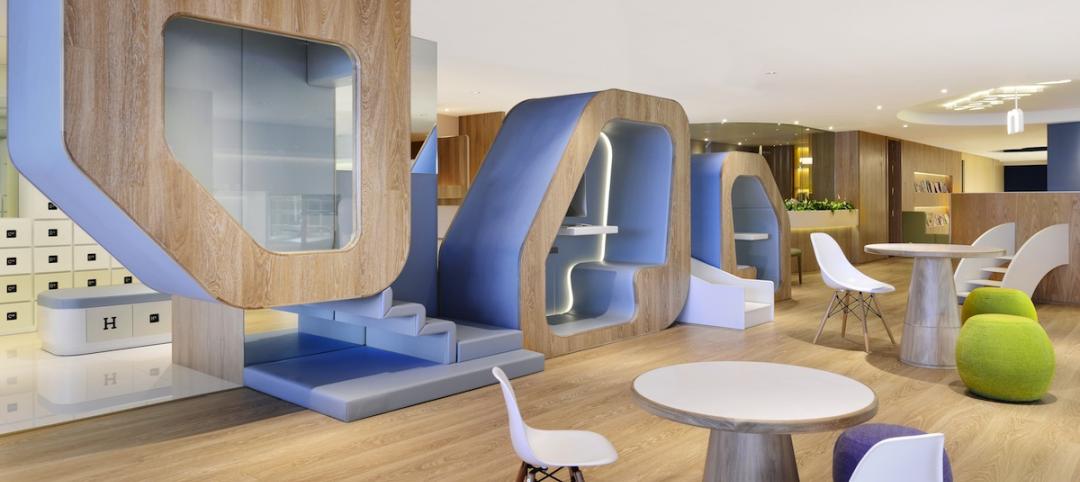
It was supposed to be the perfect new office. In July 2003, Two Rivers Marketing Group of Des Moines, Iowa, began working with Shiffler Associates Architects on a 14,000-sf building to house their rapidly growing marketing firm. Over the next six months they put together an innovative program that drew on unprecedented amounts of employee feedback. Construction kicked off in June 2004; by December, their dream office was close to being reality.
 |
| PHOTOS: CAMERON CAMPBELL |
Then, on December 20, 2004, the virtually complete building caught fire and burned to the ground, leaving Two Rivers Marketing with a soon-to-expire lease and no place to go.
In the aftermath of the fire, the Building Team—Shiffler Associates Architects, with Larson & Larson Construction (GC), The Waldinger Group (M/E engineer), and Korpela Engineering (structural)—came to realize that the fire was something of a mixed blessing: the burnt-out space wouldn't have met the client's needs for long in any case. In six years, the staff had grown from 14 to 60 employees, and the marketing firm was hiring like mad. Clearly, finding a new building to renovate with enough room for expansion was top priority.
Three months later, they found the right place—32,000 sf of steel and glass. Originally constructed in 1935, this former General Motors parts warehouse offered sweeping views of the Iowa State Capitol building and downtown Des Moines. With all square footage on one large floor, the warehouse gave Two Rivers Marketing the opportunity to arrange their staff in an open configuration that separated people by distance, rather than walls, and encouraged collaboration between designers, writers, and account managers.
The firm also felt that the industrial space offered a symbolic connection to their clients—largely industrial-based companies like Bobcat and Ingersoll Rand—in a way that a stuffy, marble-and-mahogany environment would not. Nor did it hurt, given the firm's recent history, that the warehouse was made entirely of noncombustible materials.
 |
 |
| Simple, inexpensive materials were used throughout the interior spaces. The main lobby is clad with plywood panels (top) and semi-transparent corrugated fi berglass walls enclose the mezzanine workspaces (above). PHOTOS: CAMERON CAMPBELL |
With Two Rivers Marketing's lease set to run out at the end of 2005, the design-build team had nine months to not only repair 70 years' worth of lapsed maintenance, but also to transform a raw warehouse into the ideal office space for a fun, hip marketing firm.
The first step was quickly coming up with an architectural program and design that would fit the space. Luckily, the team was able to use the program from the original, burnt-out building. To make the program fit the much larger space, they added a photo studio, a larger break area, and plenty of office room that would allow the company to grow.
Then came the job of updating and repairing the shell of the building to meet codes and energy-efficiency needs. The building's windows—steel sash and single pane, many with concrete sills that had come loose from the masonry below—needed serious work. The team reset all the windows and doweled them into place, replacing the old panes with aluminum frames and insulated glazing. The HVAC system, which at purchase consisted of multiple ceiling-hung furnaces, was replaced with more effective rooftop units.
With the basics taken care of, the team could then move on to aesthetics. In order to build a brand connection with their industrial clientele, Two Rivers chose to maintain the look and feel of the original GM structure. The original concrete floor was polished to a bright sheen. The trim materials used for desks, wall details, and the few dividing walls were chosen for both their industrial character and their ability to maintain a sense of openness. These included plywood and inexpensive corrugated fiberglass panels.
But the team's greatest achievement was the addition of a mezzanine into the building's pre-existing central clerestory. Adding 3,000 sf of extra space, the mezzanine is self-supporting and appears to float on narrow, canted columns. It is divided into a series of “pseudo rooms,” defined enough to give the firm's executives private offices, but tied to the rest of the design's open layout by semi-transparent corrugated fiberglass walls set with open plywood window boxes.
The industrial theme is maintained here, too, by walkways made of steel grating and wire mesh guardrails that reference back to old-fashioned factory catwalks. The space beneath the mezzanine is designed to be an impromptu meeting place, with couches and chair groupings that encourage brainstorming sessions.
Completed last December, the project has won several preservation and design awards. Two Rivers Marketing continues to draw in more new employees, possibly as a result of another renovation element—a full kitchen complete with keg fridge and pool table.
Related Stories
| Feb 7, 2014
Zaha Hadid's 'white crystal' petroleum research center taking shape in the desert [slideshow]
Like a crystalline form still in the state of expansion, the King Abdullah Petroleum Studies and Research Center will rise from the desert in dramatic fashion, with a network of bright-white, six-sided cells combining to form an angular, shell-like façade.
| Feb 6, 2014
End of the open workplace?
If you’ve been following news about workplace design in the popular media, you might believe that the open workplace has run its course. While there’s no shortage of bad open-plan workplaces, there are two big flaws with the now common claim that openness is bad.
| Feb 5, 2014
Extreme conversion: Atlanta turns high-rise office building into high school
Formerly occupied by IBM, the 11-story Lakeside building is the new home for North Atlanta High School.
| Feb 5, 2014
7 towers that define the 'skinny skyscraper' boom [slideshow]
Recent advancements in structural design, combined with the loosening of density and zoning requirements, has opened the door for the so-called "superslim skyscraper."
| Jan 30, 2014
See how architects at NBBJ are using computational design to calculate the best views on projects [video]
In an ideal world, every office employee would have a beautiful view from his or her desk. While no one can make that happen in real life, computational design can help architects maximize views from every angle.
| Jan 30, 2014
The evolving workplace: One designer's inspiration board
"Open office" has been a major buzzword for decades, and like any buzzword, some of the novelty has worn off. I don't believe we will abandon the open office, but I do think we need to focus on providing a dynamic mix of open and closed spaces.
| Jan 29, 2014
Richard Meier unveils 'urban courtyard' scheme for Mexico City towers
A grand atrium, reaching some 30 stories, highlights the contemporary, bright-white design scheme unveiled this week by Richard Meier & Partners for a new mixed-use development in Mexico City.
| Jan 28, 2014
2014 predictions for skyscraper construction: More twisting towers, mega-tall projects, and 'superslim' designs
Experts from the Council on Tall Buildings and Urban Habitat release their 2014 construction forecast for the worldwide high-rise industry.
| Jan 28, 2014
16 awe-inspiring interior designs from around the world [slideshow]
The International Interior Design Association released the winners of its 4th Annual Global Excellence Awards. Here's a recap of the winning projects.
| Jan 28, 2014
Big Ten Conference opens swanky HQ and museum [slideshow]
The new mixed-use headquarters includes a museum, broadcast studios, conference facilities, office spaces, and, oh yeah, a Brazilian steakhouse.


